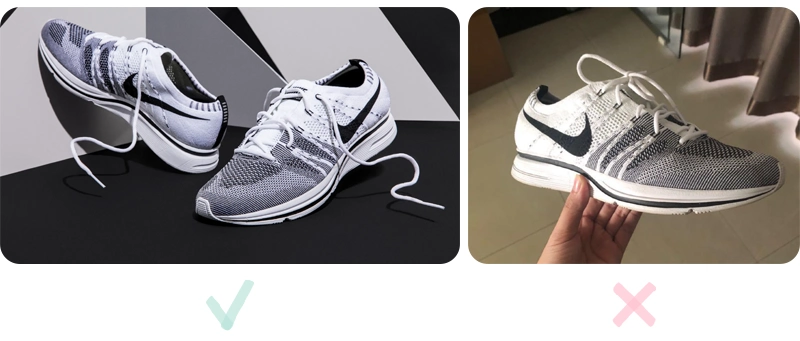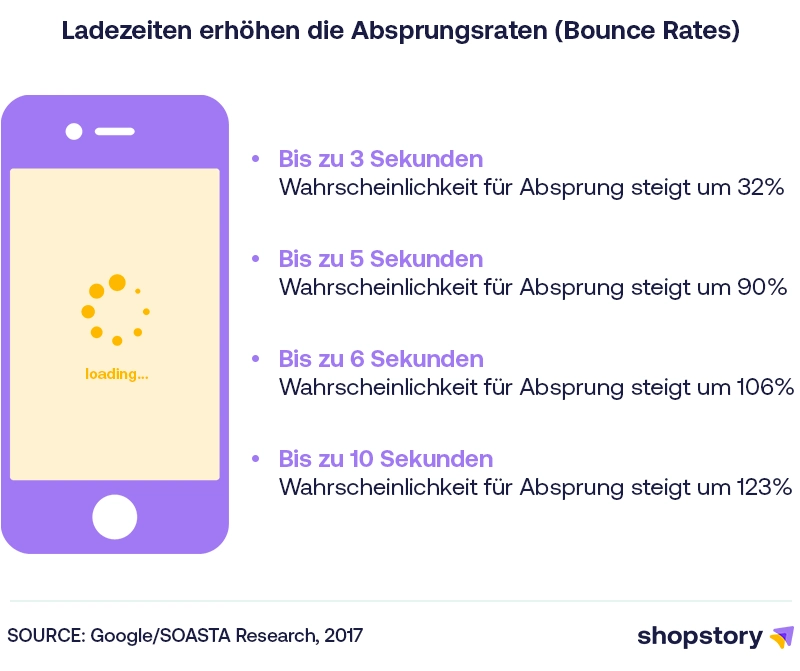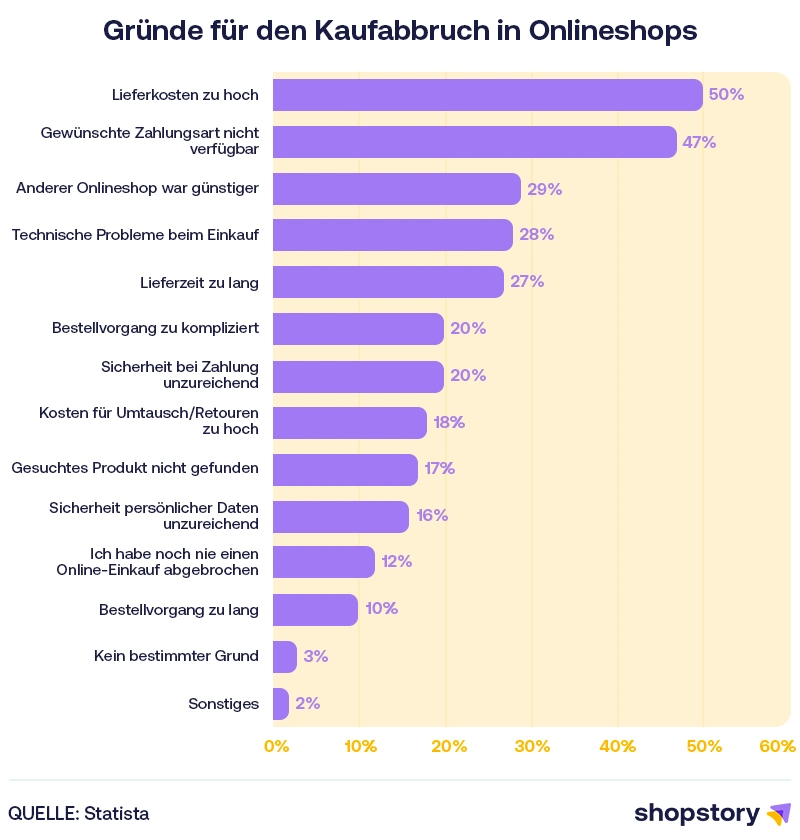ECOMMERCE
10 Tips to Increase Sales in your Online Shop
13.03.2023

Would you like to increase sales in the online shop? The good news is: It's definitely possible! Because people don't always make their decisions rationally. They often follow their intuition or make purchasing decisions based on emotions. You should internalize this knowledge and use it in every step of your online shop. In this context, we have 10 tips for you to get the most out of your online shop and thus increase your sales.
These 10 tips will help you increase your online shop sales
Before you implement our tips, it's important to note that each one is designed to ultimately increase your conversion rate. This metric is the biggest lever you have in your online shop to increase sales. The conversion rate is a key performance indicator (KPI) for online shops because it shows you what percentage of your visitors take a desired action, such as downloads, sign ups (e.g. newsletter), or purchases. The higher your conversion rate, the more efficiently your online shop is converting visitors into paying customers. However, a low conversion rate doesn't always mean a problem with your shop itself. It's possible your marketing efforts are reaching the wrong audience. Therefore, it's important to test different marketing strategies and website elements against each other. By A/B testing, you can see which tactics achieve the highest conversion rate for your target audience.
1. Product descriptions with a focus on benefits rather than features
Crafting compelling product descriptions can be trickier than it seems at first glance. The pitfall for many ecommerce businesses lies in focusing on product features rather than highlighting the benefits those features offer customers. In reality, features tend to be less important to customers. The critical question you should answer is, "How can the product make the customer's life easier?" Highlight the added value of the products. Do they save time? Do they make transportation easier? Are they easier to handle?
2. Increase the average shopping cart value
Another strategy to boost sales in your online shop is by increasing the average shopping cart value. We offer various techniques to incentivize your visitors to fill their carts with more goodies, but delving into those goes beyond the scope of this article. However, you can explore these strategies in more detail in our article here.
3. Professional product photos
It might sound like a no-brainer, but you'd be surprised how often it gets overlooked! Especially in the age of Instagram and other visually driven platforms, aesthetic product photos are of great importance. After all, online shops thrive on visual appeal. So showcase your products from multiple angles and highlight interesting details. This will help your customers get a better feel for the products and make informed comparisons. High-quality photos can also work hand-in-hand with product descriptions and reviews, boosting that all-important purchase motivation. Plus, with high-quality smartphones readily available, capturing great product photos has never been easier.

Comparison: A good and bad product photo
4. Minimize loading times
A significant portion of customers abandon their online purchases when faced with excessive loading times. As such, website loading speed is a critical factor impacting both user experience and conversion rates. There is a direct correlation: the longer your online shop takes to load, the higher the likelihood of visitors leaving without completing a purchase. This metric is further explored through the concept of bounce rates. Studies reveal that a substantial number of online shoppers (e.g., one-third in Germany) will abandon their purchases if the loading time exceeds three seconds. Consequently, website loading speed not only influences your online shop's ranking on search engines like Google, but also directly impacts conversion rates and, ultimately, your sales figures. This connection is demonstrably significant, as evidenced by a Google/SOASTA study in 2017 (see figure below). The study reveals a dramatic increase in bounce rates: 32% for loading times up to 3 seconds and a staggering 90% for loading times up to 5 seconds.

Load times in relation to bounce rates
Beyond negatively impacting bounce rates, long website loading times demonstrably hinder search engine ranking and ultimately, a company's sales figures. Consequently, optimizing your online shop's loading time is paramount to ensure a smooth and swift user experience, granting visitors rapid access to your desired information or offerings. In essence, shorter loading times demonstrably exert a positive influence on online consumer buying behavior. They can demonstrably reduce bounce rates, elevate conversion rates, and enhance your shop's visibility on search engines like Google. It's important to note that loading times are but one factor significantly influencing customer experience. Our informative blog post, "Understanding and Sustainably Improving Bounce Rates," delves deeper into this topic.
5. Trust is worth its weight in gold
In ecommerce, trust and established seals of approval hold paramount importance. They serve as crucial guideposts for customers, offering a sense of security and assurance regarding the online shop's legitimacy and reliability. Unlike the tangible experience of physical shopping, online interactions lack the element of face-to-face contact. This presents a potential drawback, as differentiating fraudulent from legitimate online stores can be challenging for consumers. Fortunately, established seals of approval and reputable rating platforms, such as Trusted Shops or Trustpilot, effectively address this concern by providing valuable third-party verification. Businesses lacking a substantial number of existing reviews on these platforms can proactively address this by soliciting feedback from satisfied customers after their purchase experience. Many successful wholesalers employ email campaigns to this effect, inviting customers to rate their products approximately one to two weeks after purchase. Cultivating trust demonstrably exerts a positive influence on consumer buying decisions, ultimately translating to increased sales within your online shop.
6. Optimize the checkout process
The checkout process is the last step in a customer's buying process and therefore crucial for the success of an online shop. If the checkout process is too complicated, too long or too uncertain, this can lead to abandonment and lost sales. There are various tips and tricks for optimizing the checkout process. For example:
- A clear and concise design for the shopping cart
- A simple and quick entry of customer data
- A choice of different payment and shipping options
- A transparent breakdown of shipping costs and delivery times
- Safety and quality certificates for confidence-building
- The ability to change or cancel orders
- A confirmation of the order via email
By taking these actions, you can increase customer satisfaction, reduce abandonment rates, and thus increase your sales.
7. Short delivery times & free delivery
Delivery time has a significant impact on customer satisfaction and the final purchase decision. If the delivery time is too long, customers may become impatient or change their mind, resulting in order cancellations or returns. This easily results in lost sales and higher costs on your part. If the delivery time is short, customers can enjoy their product more quickly, are less likely to reconsider their purchase and have a positive experience with your online shop. In addition, they are more likely to order again or recommend you, which leads to higher sales and better customer loyalty.
Another important factor in this context is free deliveries. As can be seen later in this article, 50% of respondents in a Statista study say they have already canceled a purchase because delivery costs were too high. Free delivery encourages customers to buy and reduces the abandonment rate at the same time. However, costs and profitability should be considered in advance. For example, it makes no sense to offer the delivery of a kitchen free of charge if this requires a freight forwarding company. For this reason, some online shops only offer free delivery from a certain order value or only for certain products.
8. Different and highly visible means of payment
Means of payment are the various ways in which a customer can pay for their order with you. There are many different payment methods, such as purchase on account, credit card, PayPal, instant bank transfer, Google, Apple or Amazon Pay. The selection of different payment methods has a great influence on the sales of online shops:
- If the payment methods are too few or too insecure, customers may lose confidence or not find their preferred payment method. They may abandon the purchase or switch to another online shop, resulting in lost sales and customers.
- When the payment methods are numerous and secure, customers can gain trust and choose their preferred payment method. You can complete the purchase or order more, which leads to higher sales and more customer loyalty.
So you see that different payment methods can have a different impact on the sales of online shops. They can influence the buying decision of customers and determine the competitiveness of the online shop.
9. Strategic placement of discounts
While discounts can undoubtedly be a powerful tool to incentivize sales, their effectiveness hinges on strategic implementation. Misused over the long term, they can have a detrimental impact on your business. The pitfall lies in overdoing it – online shops that offer frequent or predictable discounts risk conditioning their customer base. Customers who become accustomed to a specific discount pattern, such as recognizing that new products are routinely discounted after four weeks, may simply postpone purchases in anticipation of the next sale.
Here are some examples of effective discount strategies:
- New customer discount for everyone who places an order in the online shop for the first time
- A discount code for subscribing to the newsletter
- An exit popup that suggests a small discount for those who try to leave the online shop without making a purchase
- A win-back discount by email for existing customers who have not shopped in the online shop for 2-3 months and who you would like to get back
10. Clearly defined cancellation and return policy
A clearly communicated and readily accessible return policy can positively influence sales in the online shop because it increases customer trust and makes the purchase decision easier. You should therefore always give your customers the option to send something back - even if you don't really want to. However, in most countries, an exchange right is not a legal obligation for retailers, but a voluntary service. The retailer can therefore usually set his own conditions for the exchange. However, thanks to the Internet, customers are now smarter and better informed than before. That means they also compare you with other online shops. It is all the more important that customers know that they can also exchange with you at any time. In cases where this is not possible, it should be clearly visible in the purchasing process.
Why customers abandon their purchases
Statista has conducted a small case study on why visitors to online shops abandon their purchases. The answers are not only interesting, they also confirm the effectiveness of our 10 tips in this article.

The most common reasons for purchase cancellations in online shops (Source: Statista via Händlerbund.de)
Conclusion
Optimizing your online shop is a strategic way to boost your sales. This process involves improving various aspects of the customer experience, like design, usability, product presentation, and payment options. While marketing strategies haven't been covered in detail here and deserve their own discussion, we recommend checking out our blog, "Shopstory software vs. agency: The marketing alternative for online shops." By implementing the optimizations we've outlined, online shops can effectively address many of the common issues that lead customers to abandon orders.
To learn more about strategies specifically designed to increase the value of your shopping cart, you can explore our comprehensive blog post: "Increasing Shopping Cart Value in the Online Shop Made Easy" :
Weitere Tipps zur Umsatzsteigerung
More to Explore
Discover more insights from our latest articles
© 2025, Shopstory









